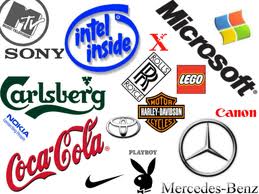Patent portfolios associated with strong positive reputation appear to enjoy better performance, or so it seems.
It is no coincidence that many of the world’s best known and most valuable brands have other IP traits in common: Their reputation for quality, innovation, and consistency not only facilitates product sales and shareholder interest, but to enhance the value of their patents, trade secrets and authored content.
At the same time known expertise in securing and managing intellectual property rights and handling patent disputes (e.g. Microsoft (5), IBM (3), Intel (8) and Philips (41)) can add value to overall brand reputation. Good patents held by high-profile brands often appear to be worth more.
It is clear that the reputation of high-value brands for quality and reliability can help to a good patent portfolio to perform even better.
Interbrand’s “best brands” survey for 2012 includes many of the usual world-class names. Note how many of these brand giants are also patent powerhouses in their own right. Nine of the top ten have significant portfolios, and at least five out of the top ten very large ones. For 2012’s top 36 brands see the chart below. For the 100 best with an explanation of each, click here.
* * *
In an article for Managing Intellectual Property that I wrote in 1998 with Dr. James E. Woods, an economist, we suggested that associating patents and patent strategy with positive reputation frequently results in enhanced value both for the patents and trademark. A well-known business brand that does not hold least some relevant patents and a strategy to generate return on them, is likely leaving value on the table.
Smart companies are learning how to use brand equity and reputation to leverage their reputation for innovation and importance of their invention rights. Perceived value plays a significant role in intellectual asset management, and a strong brand can make a good patent portfolio even better. Valuable IP rights, notably trademarks and patents, feed off of each other.
Intel Inside® was part of an aggressive advertising campaign launched by Intel (8) in 1991 to stimulate demand for its (patented) Pentium® processor. Whether there was a qualitative difference between it and comparable devices was unclear. Heavy branding in 130 countries via a five note, tone-based, jingle, served to provide the Pentium with margins up to three times higher than its competitors’. Without it the patent on the Pentium would have meant far less.
Functionally, Intel’s PC processor was not that different form AMD’s less costly one, but its venerable branding from an aggressive retail advertising campaign, paved the way to ubiquity. It’s no accident that a semiconductor maker is the eighth most valuable brand in the world, ahead of BMW (12) and Tiffany (70). Does anyone outside of a small circle of techies, lawyers and investors know who Micron is?
Of the Interbrand’s top ten, the only company that I am aware of that is without a respected patent portfolio is McDonald’s (7). Coincidence or intelligence?
Businesses with extensive patent holdings and reputation for generating return on innovation, benefit from branding their IP success. Nortel and Hitachi are a examples of patent-rich businesses whose IP success and value may have been somewhat undervalued because of their clear brand identify. IP without brand recognition, I believe, leaves money on the table for well-known companies that fail to take advantage of leveraging their intangible assets.
Consumer products companies Disney (13), Nestle (57), L’Oreal (42), and Gillette (16), all have significant numbers of meaningful patents. (Global cosmetics maker L’Oreal, for example, has received 500 to 700 patents per year for the past decade, or about 6,000 patents.) Iconic eBay (36) has very few patents and seem to be uncertain what to do with those they hold. Google (4), until its purchase of Motorola (unrated), and rival Facebook (69) were in a similar boat. Both have yet to leverage their IP rights and strategy in context of their name recognition. Recently, AOL did leverage its reputation for early Internet success with a billion dollar sale to Microsoft. How these transactions are perceived publicly has become increasingly important.
* * *
Apple (2), second only to “low tech” Coca-Cola (1), which supports it renowned trade secret with numerous patents, also has not done enough to leverage its highly valuable brand in context of its small patent portfolio. Spending a fortune to defeat Samsung (9) in a very public suit helped to enhance its perceived patent value and validate its strategy.
Large public companies with complex assets have the ability to leverage them in innovative ways: Patents certainly can benefit from the glow provided by a top brand, even those that are essentially geared to consumer products, like P&G’s (41,000 global patents).
At the same time, even the most highly regarded trademarks (brands) can enhance their importance though association with other valuable intangibles, such as patents. Branding patents is a win-win; so are brands with patents.
Illustration source: BrandMagazine.com



One comment